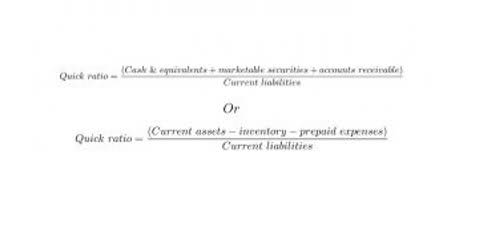What is Deferred Revenue: Deferred Income Accounting for Liability with Deferred Revenue Journal Entries

If a client pays you in advance for a six-month project, that payment initially goes into deferred revenue. As you complete the work each month, you’ll gradually move amounts from deferred revenue to earned revenue. Stripe Revenue Recognition streamlines accrual accounting so you can close your books quickly and accurately. Automate and configure revenue reports to simplify compliance with IFRS 15 and ASC 606 revenue recognition standards. If you’re using the cash accounting method, there’s no need to worry about revenue recognition since revenue is only recognized when cash is received. As a small business owner, being paid in advance for goods and services can provide a needed boost to cash flow.
What is a Chart of Accounts? A How-To with Examples

Since deferred revenues are not considered revenue until they are earned, they are not reported on the income statement. As the income is earned, the liability is decreased and recognized as income. When deferred revenue isn’t recorded accurately, the entire financial picture can become distorted. Think of a software company that gets paid up front for a year-long subscription. If this income is immediately recognized rather than deferred and spread out over the year, the company might appear more profitable than it truly is. This discrepancy can lead to flawed business decisions based on inflated revenue figures.
Legal and Regulatory Considerations
- In other words, the payment received is for goods or services that will be delivered at some point in the future.
- In contrast, deferred expenses refer to expenses paid in advance for goods or services the company has not yet received.
- This principle states that revenue should be recognized in the same period in which goods or services are provided.
- You should consult your own legal, tax or accounting advisors before engaging in any transaction.
- They’re available to you by message or appointment to go over your books and review key information.
- The deferred revenue turns into earned revenue (which is an asset) only after the customer receives the good or service.
As the company fulfills its obligations, it debits the deferred revenue account (reducing its liabilities) and credits a revenue account on the income statement (recognizing income). To report deferred revenue in the balance sheet, it is classified as https://www.bookstime.com/ a short-term or long-term liability, depending on when the goods or services are expected to be delivered. For example, if a company receives rent payments for twelve months in advance, it would initially record the entire amount as deferred revenue.
How to log deferred revenue journal entries
In Quickbooks, record deferred revenue under the ‘other current liability’ option. As you deliver, move items from deferred revenue and credit them as income under the appropriate account. Deferred revenues are the payments received by customers for goods or services they expect to receive in the future. Until the service is performed or the good is delivered, the company is indebted to the customer, making the revenue temporarily a liability. Once earned, the revenue is no longer deferred; it is realized and counted as revenue. Under accrual accounting, the timing of revenue recognition and when revenue is considered “earned” depends on when the product or service is delivered to the customer.
What Is a Liability?

Finvisor will help you with any aspect of accounting, from monthly bookkeeping to complex oversight. As your on-demand CFO, we work to understand your unique challenges and qualities, and create solutions that work. Deferred and accrued expenses are initially recorded as asset or liability accounts, respectively, and are gradually expensed over time. The accounts used to record these transactions differ, with deferred and accrued revenue initially recorded as liability or asset accounts, respectively, and later transferred to revenue accounts.
Deferred revenue is classified as a liability on the balance sheet, and represents the cash collected prior to the customer receiving the products or services. Deferred Revenue is recognized once a company receives cash payment in advance for goods or services not yet delivered to the customer. While cash from deferred revenues might sit in your bank account just like cash from earned revenues, the two are not the same. If you don’t deliver the agreed-upon good or service, or your customer is unhappy with the end product, your deferred revenues could be at risk.
- Since the principle states the revenue is recorded only when it is earned, payments for future performance of goods and services should not be recorded as revenues.
- If you’re using the cash accounting method, there’s no need to worry about revenue recognition since revenue is only recognized when cash is received.
- On the other hand, revenue is money that the company has earned through its products or services.
- Deferred revenue is a crucial aspect of a company’s financial statements because it accurately reflects a company’s liabilities and financial health.
- When it is recognized (because your company has delivered), it is proportionally recorded as revenue on your income statement.
- Consider a media company that receives a $1,200 advance payment at the beginning of its fiscal year from a customer who’s purchasing an annual newspaper subscription.
Under the cash basis of accounting, deferred revenue and expenses are not recorded because income and expenses are recorded as the cash comes in or goes out. This makes the accounting easier, but isn’t so great for matching income and expenses. Learn more about choosing the accrual vs. cash basis method for income and expenses. Platforms such as Stripe have been designed with features that automate the process of revenue recognition. This automation reduces human error, ensuring that financial statements are a true representation of the company’s position.
Common prepaid expenses may include monthly rent or insurance payments that have been paid in advance. Revenue recognition principles define when and how a business’s revenue should be recognized. Revenue recognition defines the accounting period to which a business’s revenue and expenses are attributed. When you finally deliver what you promised, you can then move that money where does deferred revenue go over to the revenue column in your financial statement. When you invoice a customer for goods and services and your customer pays immediately, that is considered cash revenue which is recognized immediately. If a product or service cannot be delivered, you may have to offer your customers a refund, which can be difficult if cash has already been used to cover other expenses.
